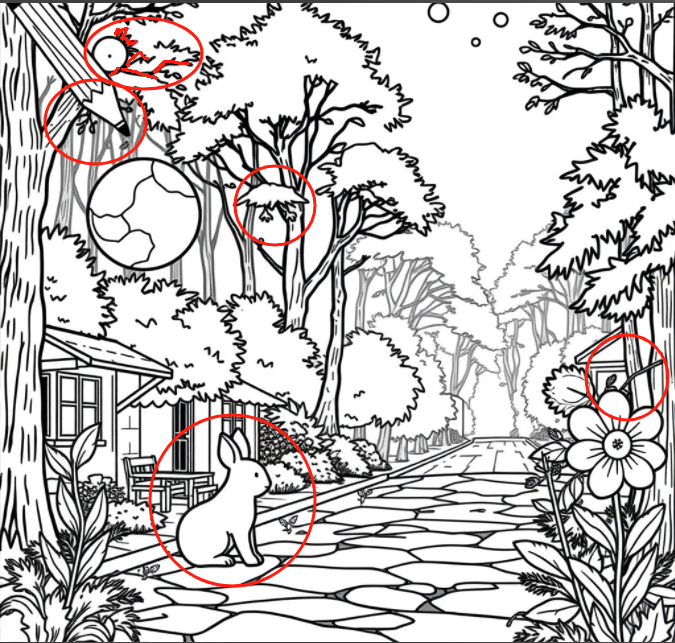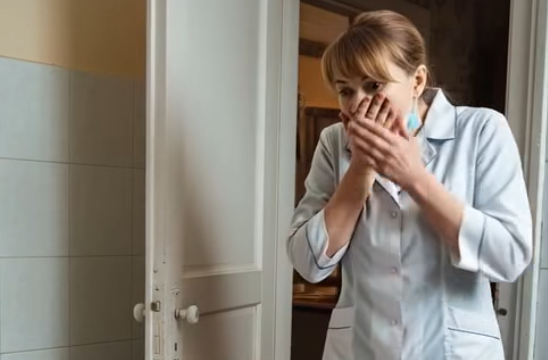If you’re looking for a fun and stimulating way to exercise your mind, “Spot the Difference” puzzles are a fantastic option that appeals to people of all ages. These visual brainteasers not only provide light-hearted entertainment but also sharpen your focus, attention to detail, and memory skills. Today, we’re exploring a particularly charming puzzle set in a tranquil nature scene. Picture this: a quiet forest path lined with lush trees and colorful flowers, where a curious rabbit sits watching the world around it. At first glance, everything looks peaceful and unchanged between the two images. But look again—you’ll quickly realize that some small yet significant differences are cleverly hidden within the scene. This nature-inspired puzzle isn’t just visually soothing—it’s also designed to challenge your brain in a subtle, satisfying way. The rabbit may appear to be the same in both images, but upon closer inspection, its position or the arrangement of flowers nearby might have shifted slightly. The surrounding trees could feature missing branches, altered leaf patterns, or even changes in shadow placement. As your eyes wander down the winding path, you may notice that a rock or two is missing or that the path’s texture subtly varies. These changes might seem tiny, but they’re intentional—and finding them is both rewarding and mentally invigorating.

One of the most appealing aspects of “Spot the Difference” puzzles is how they balance fun and challenge. These puzzles demand close observation, encouraging you to engage with the image on a deeper level. You must use logic, visual memory, and a bit of creativity to spot inconsistencies. Each discovery gives you a little dopamine boost—the satisfaction of a small victory—which is one reason why these puzzles remain so popular. But beyond entertainment, these puzzles are excellent brain-training tools. First, they improve your attention to detail. Spotting differences between two nearly identical images trains your brain to notice even the most minor changes—a skill that’s useful in everyday life. Whether you’re proofreading documents, navigating busy environments, or simply paying closer attention to your surroundings, this heightened awareness can be incredibly helpful. Second, these puzzles strengthen visual memory. As you compare images, your brain must hold the visual layout of one image in mind while examining the other. This process enhances your short-term memory and helps your brain retain visual information more effectively. Over time, this can translate into better recall in daily tasks. Third, solving these puzzles boosts your problem-solving skills. You’re not just passively looking; you’re actively searching, thinking critically about where differences might be hidden, and developing strategies for uncovering them. It’s a low-pressure way to keep your analytical thinking sharp.
If you’re new to this kind of puzzle or want to get better at solving them quickly, here are a few tips. Start by scanning the entire image instead of zeroing in on one part. This gives you a holistic view and can help you notice glaring differences right away. Then, compare the background and foreground separately. Often, the differences hide at the edges of the image or in less-obvious places like tree branches, flower arrangements, or distant shadows. Look for patterns, symmetry, or mirrored elements that may help you identify changes. And if you find yourself stuck, don’t hesitate to take a break—coming back with fresh eyes often makes a difference pop right out at you. At the heart of these puzzles is joy. They are enjoyable, satisfying, and mentally enriching. Whether you solve them solo or with friends and family, they’re a great way to relax and challenge yourself at the same time. You don’t need to be an expert to enjoy the benefits—they’re accessible, engaging, and endlessly rewarding.

In this nature-themed puzzle, every difference you spot is a small achievement. Each change you discover—whether it’s a branch, a rabbit’s pose, or a flower’s location—is a reward for your focus and patience. And the best part? You’re giving your brain a little workout without even realizing it. So next time you come across a “Spot the Difference” puzzle, don’t just scroll past it. Take a moment to dive in, explore the scene, and put your observational skills to the test. Whether it’s part of your daily brain-training routine or a quick break from your usual tasks, these puzzles are a delightful way to stay mentally sharp and entertained.





